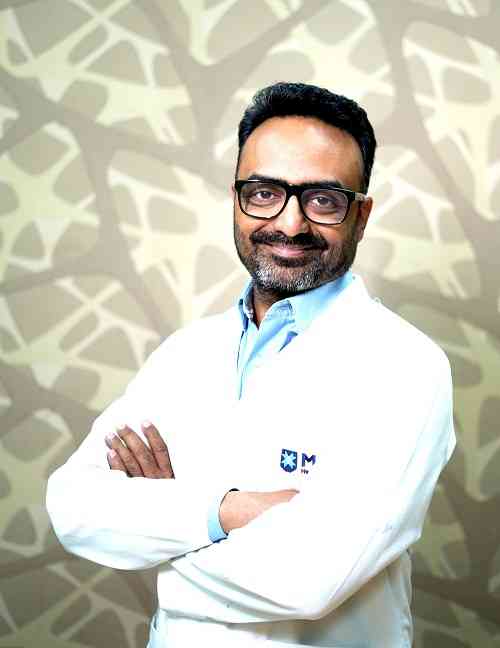Everything you need to know about Paediatric Spinal Cord Tumour and its lethal effects on children

by Dr. Satyam Satyarth, Consultant, Medical Oncology, HCG EKO Cancer Centre, Kolkata.
Getting diagnosed with cancer is spine-chilling but if it is detected in a kid, it is even more devastating. Nothing can be more traumatising than watching a child going through cancer treatment, but one should be mindful that with right doctors and right therapies, it is possible to see the child, leading normal life.
One of the tumours detected among the younger lot is Spinal Cord tumour. Though rare, but diagnosed, this ailment needs to be treated swiftly. There are many types of spinal cord tumours in children – benign (non-cancerous) and malignant (cancerous).
The spinal cord is the vital part of the Central Nervous System (CNS) in the human body, and it is a long nerve tissue running down from the brain stem connecting to the centre of the back. The Spinal Cord, covered in three layers called membranes, is surrounded by vertebrae or backbones, in layman's terms. The primary functions of spinal cord nerves include carrying messages between the brain and the rest of the body – regulating muscle movements and feeling the touch on the skin.
Spinal Cord Tumours
The tumours of the Spinal Cord are also known as neoplasms, an abnormal growth of tissues that originate inside the spinal column. Tumours that occur in the spine are called primary tumours. Cancerous or non-cancerous, Spinal Cord Tumours need urgent medical and surgical intervention, as they mount pressure on the spine, leading to various deformities and severe complications.
Symptoms of Spinal Cord Tumours in Children
At first, the child may not feel any noticeable symptoms but can experience the following signs, even as the tumour grows in its size. Symptoms also differ from child to child, depending on the location of the tumour, its size, growth, and age
One of the main symptoms to watch out for is chronic back pain. Other indications are:
Ø Chronic neck pain
Ø Sciatica – Intense pain radiating from the sciatic nerve from the lower back to the hips and then down to the legs
Ø Fatigue
Ø Partial paralysis
Ø Structural deformity in the spine
Ø Loss of control over the urinary bladder
Ø Change in bowel movements
Ø Sudden onset of fever
Causes
There is no definite reason to understand what causes Spinal Cord Tumours. Just like in the case of other cancers, genetic conditions may play a role.
Diagnosis
During the physical examination, the doctor may check for lumps or other signs of disease. The familial health history of the patient will also be studied thoroughly to understand the reasons. A neurological exam consists of various assessments including the patient's mental status, ability to stand up, walk coordinate, muscle reflexes, and senses. Imaging tests like CT-Scan, MRI, and PET-CT are recommended to understand the location and growth of the tumour. A blood test is done to measure the presence and amounts of certain substances linked to specific types of cancer in the blood. If elevated, these substances, also known as tumour markers, confirm the presence of cancer.
Treatment
Surgery:
Surgery is often the first line of treatment for removing the tumours carefully without causing risk to the Spinal Cord or nerve injuries.
The operation is performed under the lens of high-powered microscopes, enabling the surgeon to differentiate the tumour from healthy tissue. In certain instances, the surgeon may use high-frequency sound waves to break up the tumour into tiny fragments for easy removal.
Other treatment options, subsequently include:
Ø Chemotherapy
Ø Radiation Therapy
Ø Medications
Ø Physiotherapy and rehabilitation
Recovery After Treatment?
The prognosis is influenced by various factors, including:
Ø The type of tumour
Ø If there are any residual cells even after surgery and treatments
Ø Location of the tumour
Ø Age of the child
Ø The child might require rehabilitation in physiotherapy, medication, and emotional support, to recover completely
If you notice any of the above signs, symptoms and unusual changes, consult the nearest doctor, immediately.


 City Air News
City Air News 








